Historians generally pinpoint 476 C.E. as the fall of Rome, but the western Roman empire had been slowly collapsing for centuries — and the eastern Roman empire endured for another millennium.
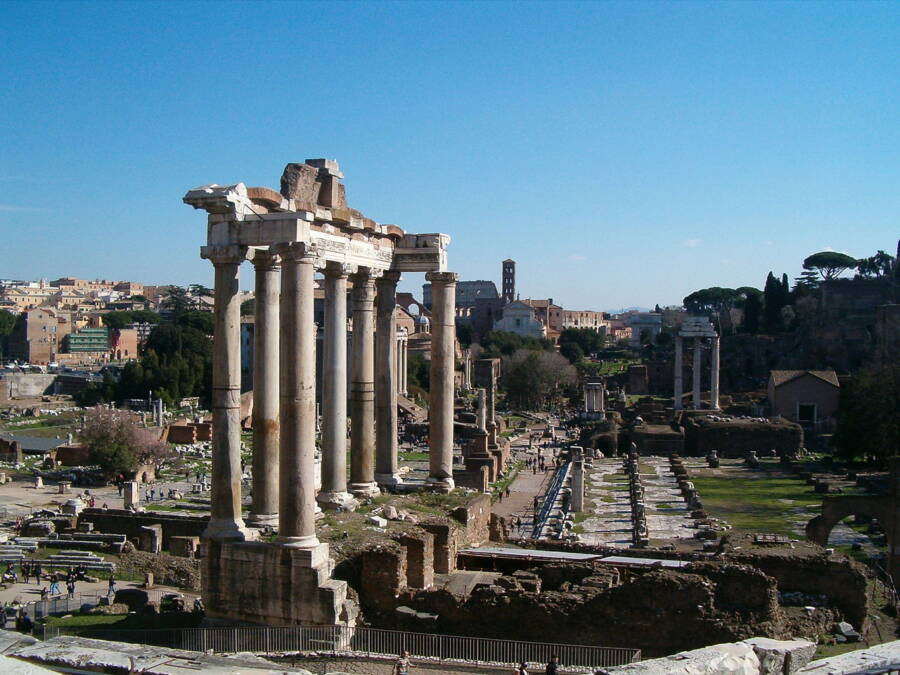
Marcok/Wikimedia CommonsToday ancient Rome is reduced to ruins, like these ones of the Temple of Saturn. So why did Rome fall?
Sometime before his death in 19 B.C.E, Latin poet Albius Tibullus described Rome as the “Eternal City” in an elegy. And for hundreds of years, that phrase — Roma urbs aeternus est — rang especially true. So why did Rome fall?
Though it had modest origins, Rome grew over the centuries from a small village in central Italy to the powerful Roman empire. The empire unfurled across most of Europe, its fingertips grazing far-off locales in Britain, Asia, and North Africa. Then, in 476 C.E., Rome collapsed.
But Rome’s fall didn’t come in a single moment — though it could, arguably, be linked to a sack of the city that year. Instead, the factors that led to the fall of the Roman empire accumulated slowly. Not only had the empire’s expansive success become an albatross around its neck, but the empire was literally divided between west and east, political instability wracked its leadership, and Rome faced increasing threat from Germanic tribes.
In short, the fall of Rome was not due to a single cause but a myriad of things — many of which are still debated by historians to this day.
From A Ramshackle Village To The Roman Empire
The fall of Rome came like a ticking clock, century by century. Legend states that Rome was established in 753 B.C.E. by twin brothers Romulus and Remus, sons of Mars, the god of war. From there, it grew into a monarchy and then into the Roman Republic, which lasted for some 500 years.

FALKENSTEINFOTO / Alamy Stock PhotoA reconstruction of the Roman Forum in Ancient Rome.
Following the assassination of Julius Caesar by Brutus and other Roman senators in 44 B.C.E., Caesar’s heir Augustus took power in 27 B.C.E. Ending the power-sharing tradition that had long defined Roman rule, Augustus became the first Roman emperor. The Roman empire had begun. But the seeds of its eventual destruction were sown early on.
Even before Augustus took power, the Roman Republic had begun to expand. During the Punic Wars with Carthage (a powerful ancient city in present-day Tunisia) from 264 B.C.E. to 146 B.C.E., Ancient Rome had gobbled up Carthaginian territory in the Mediterranean, Spain, and northern Africa (including Carthage itself). In the 60s B.C.E., it expanded to the Middle East. And under Caesar, the Republic stretched even further into Europe.
Wikimedia CommonsThe Roman Republic and the Roman empire expanded quickly, which later helped lead to Rome’s fall.
By 117 C.E., Rome had expanded all the way to England. This expansion brought enslaved people — i.e. free labor — and countless treasures into the empire. Around this time, Rome also enjoyed a halcyon period of leadership with emperors like Nerva (96 to 98 C.E.), Trajan (98 to 117 C.E.), Hadrian (117 to 138 C.E.), Antoninus Pius (138 to 161 C.E.), and Marcus Aurelius (161 to 180 C.E.), who are known as the “Five Good Emperors.”
But these golden years of “Pax Romana” came to an end in 180 C.E., with the ascension of the dictatorial Commodus as emperor. The fall of Rome arguably began over the next century, as the empire began to confront serious political and economic issues. It began to transform, historian Cassius Dio wrote, “from a kingdom of gold to one of iron and rust.”
The Beginning Of The Fall Of The Roman Empire In The Second And Third Centuries
Why did Rome fall? A number of factors led to the Western Roman Empire’s collapse, many of which took root in the second and third century C.E.
Following Commodus’ assassination in 192 C.E., political instability wracked Rome. The “Year of Five Emperors” saw five claimants to the throne, assassinations, and civil war. Across 75 years in the second and third century, more than 20 emperors ruled Rome — and many met a bloody end.
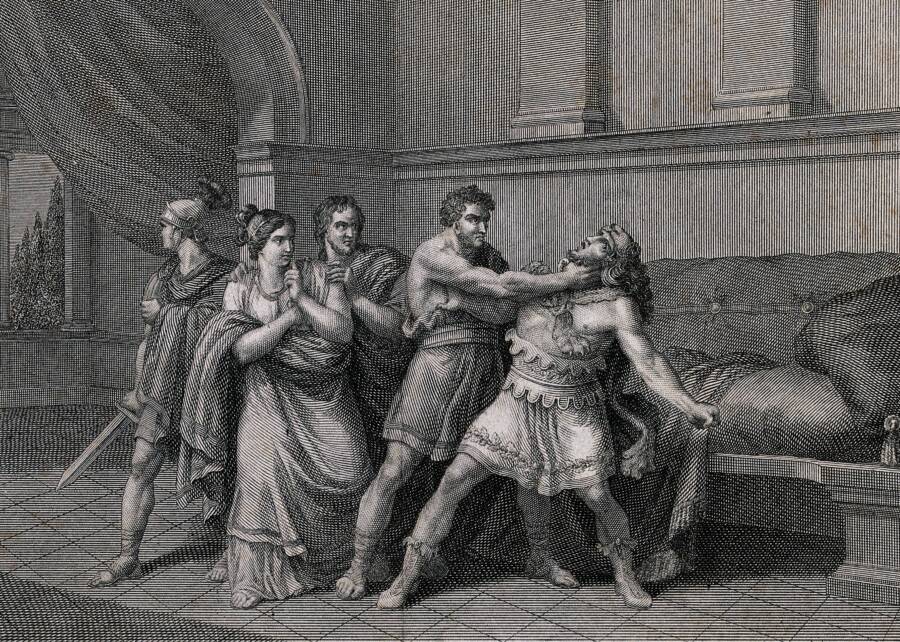
Wellcome ImagesA depiction of Commodus’ assassination, one of many political convulsions that seized Rome in the second and third centuries.
Expansion, once the pride of the Roman empire, also came to be a burden. Rome’s rapid drive had brought riches and slave labor to the empire, but the end of expansion meant that these resources vanished. Expansion also meant that Rome had more territory to defend, and was thus forced to direct more and more of its funds to the upkeep of the military. Plus, the sprawling Roman empire had become next to impossible to govern.
The Roman emperor Diocletian devised a solution to this problem when he divided the Roman empire into east and west around 285 or 286 C.E. The Western Roman Empire would have its seat in Milan (with Rome as its “ceremonial” capital) while the Eastern Roman Empire would be governed out of Byzantium (later called Constantinople in present-day Istanbul).
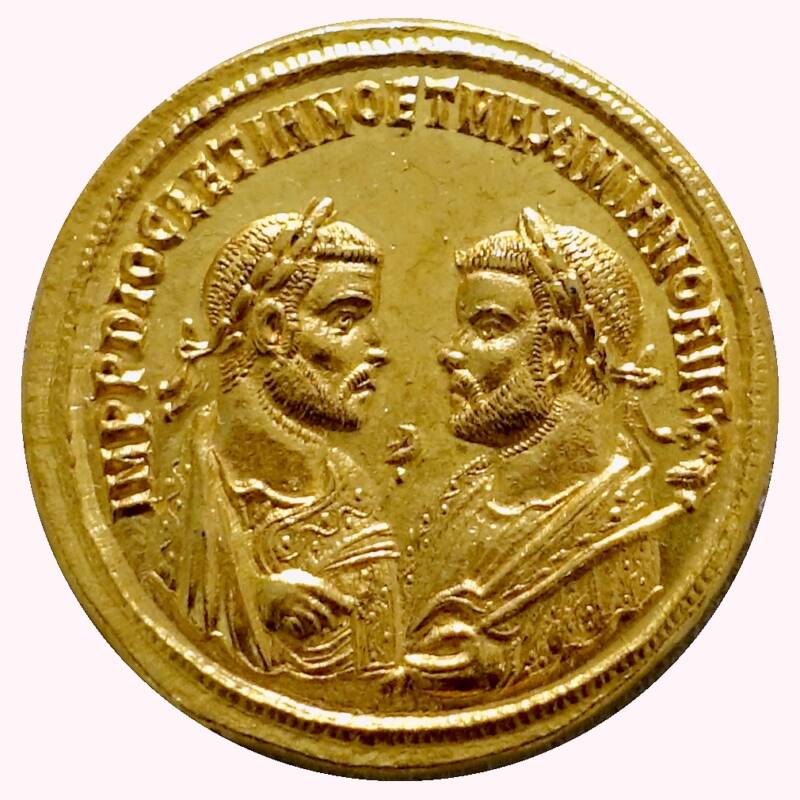
Public DomainDiocletian divided the Roman empire into east and west at the end of the third century, dividing power between himself and his co-emperor Maximian. Both are seen here on this coin from circa 287 C.E.
At the time, both seats were referred to as the “Roman Empire” (Romans would not have used the terms “Western Roman Empire” or “Eastern Roman Empire”) and for a time this solution seemed to work. Rome’s sprawling imperial holdings became more manageable.
But over the years, the Western and Eastern Roman Empires began to drift apart. The Eastern Empire took on Greek as its official language and flourished, while its Latin-speaking counterpart continued to slowly crumble. And the challenges facing the Western Roman Empire would intensify in the fourth and fifth centuries.
These problems would lead to the fall of Rome in 476 C.E.
How New Religions And Invasions Pushed The City Into Ruin
In the fourth and fifth centuries, Rome faced a number of challenges. One had been growing for centuries: Christianity.

Welleschik/Wikimedia CommonsThe mosaic of Santa Pudenziana in Rome which may date back to as early as 410 to 417 C.E.
Historians like Edward Gibbon have argued that increasing acceptance of Christians (the religion was legalized in 313 C.E. with the Edict of Milan) ultimately doomed the Roman empire. Though many historians have discounted his claim — and Gibbon himself agreed that Rome’s fall had many factors — Gibbon claimed that Christianity drove a wedge between Romans and diminished their enthusiasm for warfare.
If so, it was a bad time for Romans to lose interest in war. Starting in the fourth century, the Roman empire began to face increasing threats from Germanic tribes like the Goths.
The invasion of the Huns into Europe had pushed Germanic tribes closer to Rome’s borders. This led to the Battle of Adrianople in 378 C.E. between Eastern Roman forces and the Goths. To the shock of many Roman citizens, the Goths not only triumphed but obliterated two-thirds of the Roman army — including the emperor, Valens.
Though the two sides made peace and established a trading relationship, tensions continued. And in 410 C.E. Visigoth (Visigoths were western Goths) King Alaric I sacked Rome.
A Christian, Alaric left the basilicas of St. Paul and St. Peter alone. But he burned buildings across the city, plundered wealthy homes, and destroyed pagan temples. The Roman emperor, Honorius, was of little help. Though he sent 6,000 soldiers to Rome’s aid, they were quickly defeated by Alaric’s forces.
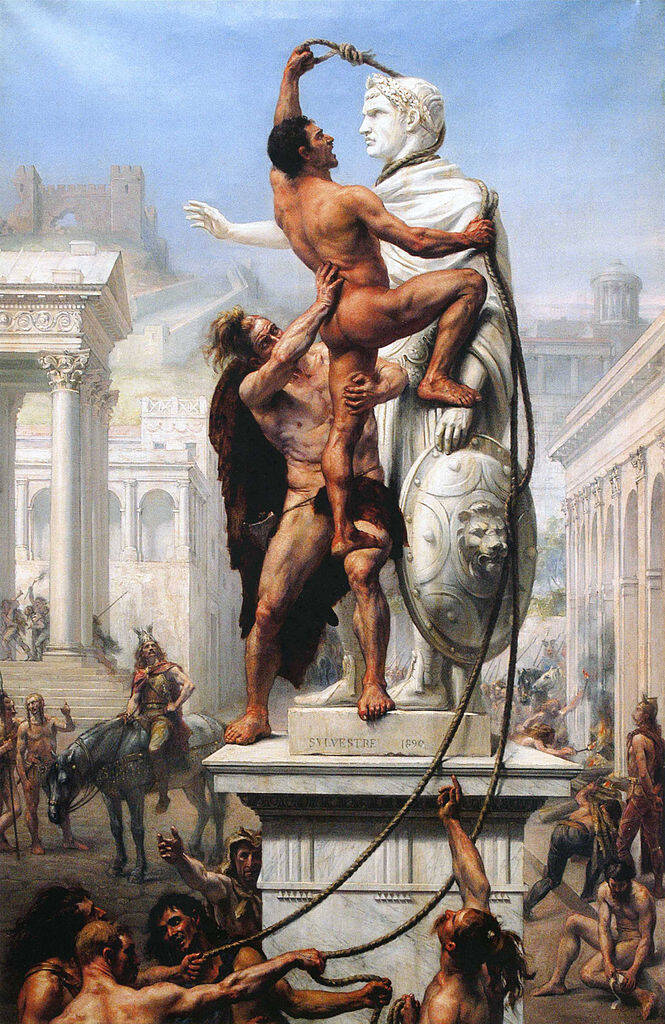
Public DomainThe Visigoth sack of Rome in 410 C.E. helped lead to the fall of the Roman empire 66 years later.
Brought to its knees, Rome appeared an easy target for other invaders. In 455 C.E., another Germanic tribe called the Vandals sacked Rome. They also took control of previously held Roman territory in northern Africa, including Rome’s prized possession won in the Punic Wars: Carthage. Meanwhile, other tribes had eaten away at Roman territories in Gaul and Britain.
Then, in 476 C.E. the Germanic leader Odoacer sacked Rome. To many historians, this invasion marked the fall of the Roman empire. Odoacer succeeded in overthrowing Emperor Romulus Augustulus, and no Roman emperor would rule from Italy ever again.
But though the Western Roman Empire had fallen, the Eastern Roman Empire would endure for centuries.
The Fall Of The Eastern Roman Empire
Because of Odoacer’s sack of Rome and disposal of Romulus Augustulus, many historians acknowledge 476 C.E. as the fall of the Roman empire. But the Eastern Roman Empire would survive until the 15th century.
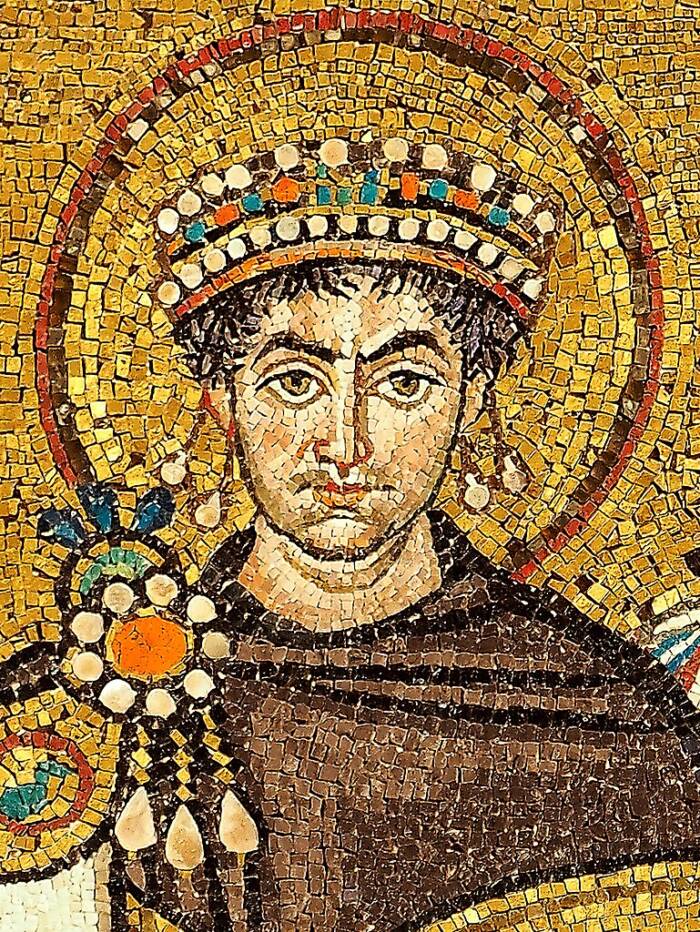
Petar Milošević/Wikimedia CommonsThe Byzantine Empire greatly expanded under Justinian I, but expansion brought many of the same problems to the Eastern Roman Empire as it had to the Western Roman Empire.
Called the Byzantine Empire, its fall mirrors the Western Roman Empire’s in some ways. The Byzantine Empire expanded under Justinian I in the sixth century, but later struggled to maintain the territory it had conquered. After the foundation of Islam in the seventh century, the Byzantine Empire also began to grapple with Islamic forces. These forces would soon wrest away great swaths of territory in the Middle East and Africa.
And in 1453, Ottoman leader Mehmed II attacked Constantinople — leading to the city’s fall and the collapse of the Byzantine Empire. At that point, it can be definitively said that the Roman empire had fallen.
Today, Rome is still known as the “Eternal City.” But the empire itself is long gone. The Roman empire slowly collapsed over the centuries before falling in 476 C.E. (in the west) and in 1453 (in the east).
So why did Rome fall? There is no single reason. Overexpansion, religion, and war all played a part. Rome’s golden glory is now reduced to dusty ruins, an unsettling symbol of how fleeting power can be.
After reading about the fall of Rome, discover the story of Timgad, the Roman ruins that were lost in the Algerian desert for 1,000 years. Or, discover the Roman origin of the famous phrase “crossing the Rubicon.”





